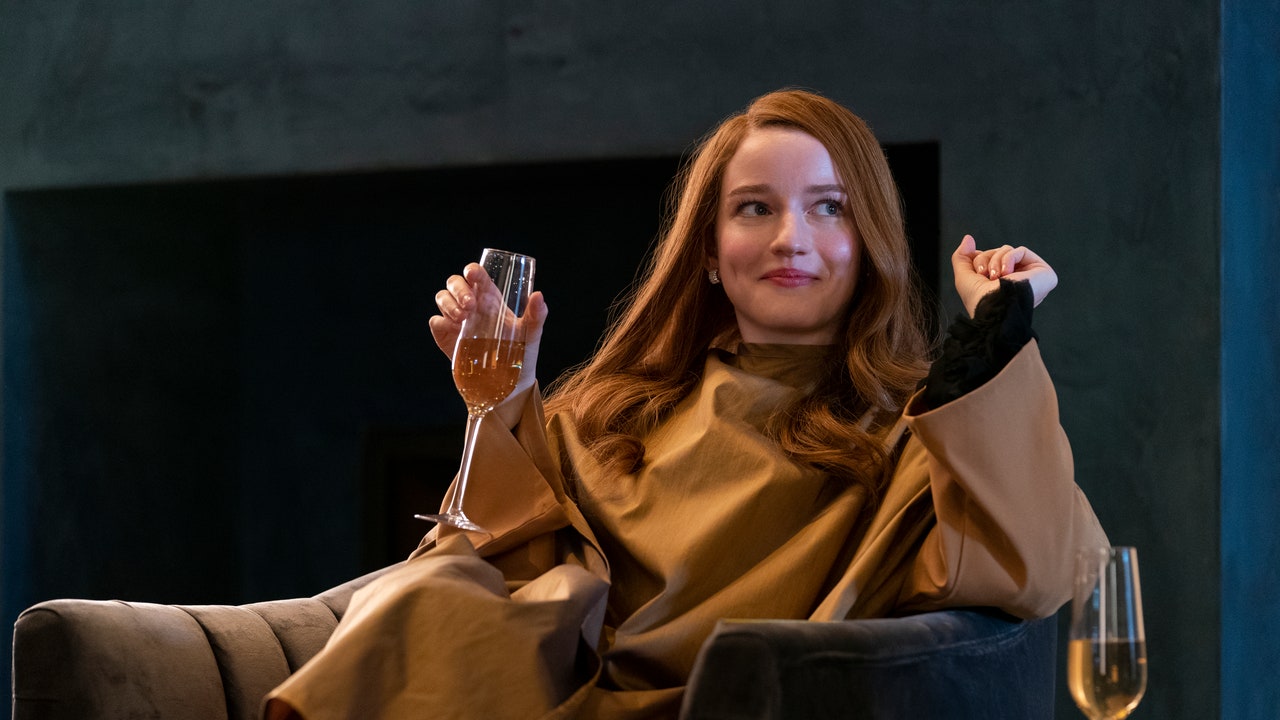- February 12, 2022
- No Comment
- 7 minutes read
Creating the Real Fancy World of Fake Heiress Anna Delvey – Architectural Digest

It was 2013 when a young German heiress named Anna Delvey first took Manhattan’s social scene by storm. Charming and calculating, she landed front-row seats at New York Fashion Week, infiltrated the art world, became a fixture at all the best restaurants, and vacationed on yachts via everyone else’s nickel. Then, it all came to a crashing end.
Now, producer Shonda Rhimes (of Grey’s Anatomy and Scandal fame) documents the story in Inventing Anna, a nine-part Netflix limited series premiering February 11. Based on writer Jessica Pressler’s 2018 New York Magazine article, “How Anna Delvey Tricked New York’s Party People,” the show follows Delvey (played by Ozark’s Julia Garner) and her on-again, off-again relationship with budding journalist Vivian Kent (Anna Chlumsky plays the fictionalized version of Pressler), who peels away the fake heiress’s real story.
The desks at Manhattan Magazine “all had working computers, and each with its own personality,” set decorator George DeTitta Jr. says.
Production designer Henry Dunn created Delvey’s world primarily in New York through various locales and Steiner Studios. Working with set decorator George DeTitta Jr., they turned an entire empty floor of a Fifth Avenue Midtown building into the film’s largest set, the fictitious Manhattan Magazine headquarters. “We took a bunch of photos at New York Magazine as a jumping-off point,” Dunn says. “The graphics department did an astounding job creating the logo, and we wanted to pay homage to the magazine.” They added some 200 magazine covers to grace the walls as he notes, “We designed one red wall with the Manhattan Magazine [logo] and thought this is what it should have: a bold, aggressive color, and not understated in any way.” They also created an opposite space for an office at Vanity Fair. “It was white on white on white and much sleeker with the VF feel as opposed to Manhattan Magazine, which is much scrappier.”
The designs for the fictitious 12 Howard Hotel were influenced by the whimsical work of interior designer and Firmdale Hotel founder Kit Kemp.
For the 12 Howard Hotel (11 George Hotel in real life), the designer and set decorator Susan Ogu took their cues from Rhimes, who wanted a Kit Kemp look. Kemp, a British Firmdale Hotel founder and interior designer, is known for her whimsical, pattern-filled interiors seen in London’s Ham Yard Hotel and Crosby Street Hotel in New York. “The goal of the set was to make it feel as rich as possible. It’s tough to sell money unless you go traditional.” Ogu placed a giant show-stopping dog sculpture against a William Morris wallpaper as a backdrop, and faux finishes mimic a beautiful, polished stone for the floor.
Framing necklaces found at the bazaars and souks in Morocco provided more texture to the set than a regular framed image would have.
The West Village town house of character Kate Burton (who plays an unwilling benefactress) is another stunning set. The grandeur of her character is depicted in the oversized town house that includes paintings by Basquiat and de Kooning (the designers received permission to recreate), Venetian walls, faux marble, 24-foot-tall curtains, a Waterworks sink, and a stove from La Cornue.
Pierre Bergé and Yves Saint-Laurent’s memorable home in Marrakech was recreated, since the original was unavailable for shooting. The designers found a fountain through a roadside seller and added oranges for a pop of color.
In once instance, a place where the real Delvey carried out one of her scams was used as a location: the palatial La Mamounia in Marrakech.
The series was also shot on location in Morocco at the 12th-century palace hotel known as La Mamounia, where Delvey ran up a $10,000 bill. “We were all over Marrakech and wanted to shoot at the house of Pierre Bergé and Yves Saint-Laurent (and unable due to security), so we found the same architect and recreated it in another part of town,” Dunn says. Italian set decorator Henriette Vittadini (niece of fashion designer Adrienne) sourced furnishings from the medina, various bazaars, and the hotel, noting, “The style is an eclectic mix of traditional, Moroccan, and European decor and blends together texture, Berber, French, and the seventies.”
Inventing Anna is available to stream on Netflix now.
© 2022 Condé Nast. All rights reserved. Use of this site constitutes acceptance of our User Agreement and Privacy Policy and Cookie Statement and Your California Privacy Rights. Architectural Digest may earn a portion of sales from products that are purchased through our site as part of our Affiliate Partnerships with retailers. The material on this site may not be reproduced, distributed, transmitted, cached or otherwise used, except with the prior written permission of Condé Nast. Ad Choices

